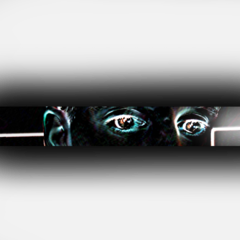-
Posts
133 -
Joined
-
Last visited
Awards
This user doesn't have any awards
Contact Methods
-
Steam
666tonsofsquirrels
Profile Information
-
Gender
Male
-
Location
Hannover, Germany
-
Biography
Sound Engineer/Tech, Bachelor, Master
Recent Profile Visitors
567 profile views
theonlyratatoskr's Achievements
-
TCL is making a "dome" panel I love engineering, and engineers deserve all the respect, but did anyone ask for this? Discuss
-
theonlyratatoskr changed their profile photo
-
I hope it's ok in this forum. I'm just sharing because it absolutely blew my mind and no one arround me can differenciate a bit from a petabyte haha Take care, everyone. Timestamped (5:04, in case it doesn't work for you):
-
Do you need simultaneous output? i.e., do you want to hear your pc and tv at the same time? If so, get a mixer. Otherwise you risk overloading the speakers.
-
Hey all, I just salvaged the panels off of two old laptops for a DIY project and would like some input - How do I drive these? Panels: - N116BGE-L41 - B116XW03 V0 They're both 1366×768 (secondary screen for audio plugin monitoring), I want to input HDMI into them and I'd ideally like to have them powered via USB from a computer. That last one is not 100% necessary though. Would this work? https://www.ebay.co.uk/itm/HDMI-DVI-VGA-LCD-Controller-Board-Monitor-Kit-adapter-for-1366X768-N116BGE-L41/202766169709?hash=item2f35ce366d:g:UncAAOSwlxlc3ljH I'd appreciate any help and suggestions! Thanks!!
-
This is tricky. If you want to control different applications' output independently using hardware, you'll have to: 1. Hardware route them to a mixer; 2. Software route using something like AudioHijack and then control AudioHijack with a MIDI controller (this would be your mixer); 3. Or, use a hardware volume mixer for the windows faders. More info: 1. Prepare your cable budget; Cables are expensive. This involves having multiple audio outputs on your motherboard/soudcard which you'll then have to convert to a line level (signal type) signal to match a mixer's line level input. You'll need two channels per application (game, skype, etc.), because you definitely want a stereo signal. So: game -> computer out Left and Right -> stereo re-amp box -> into mixer Left and mixer Right Then the same for each individual application you need audio from. You can see that this gets overly complicated for very little benefit. 2. This is the sleekest way as everything is controlled within the computer, routing, etc. and you can even apply compression, noise reduction, etc. on your micr 3. This might never work and is not stable: Conclusion: I suggest you just keep it simple buy a good microphone interface (Focusrite are always great) and use Alt+Tab and your mouse to do volume adjustments. How often do you really need to adjust an applications volume? EDIT: Apologies, the "GoXLR Mini" thing just showed up. That seems simple enough unless you can DIY something yourself. Yup, go with that one. hahaha
-
What is not right? Is something in the sound characteristics not right? What microphone are you using? More details please.
-
If your amp can't drive your headphones they'll (most noticeably) be too quiet because whatever you're using can't output enough power to the headphones. Less obvious (but still very important) is that because the amp can't correctly drive your headphones, the frequency response (how they sound) of the headphones will also change. As above, Schiit Audio make awesome units, Fiio is very good for the money...there are so many good options.
-
No app yet; I suggest processing audio files from your computer. In any case, you should know that you could upsample but quality does not magically increase. Example: upsampling 128kbps to 256kbps will only duplicate values of the file. 1-0-1-1-etc. will turn into 1-1-0-0-1-1-1-1-etc. You'd just be increasing the file size unnecessarily. One would only upsample for compatibility purposes if for example you're editing video and you need all the files to be at the same sample rate.
-
If you're recording yourself then get the interface, Option 3. Behringer used to be known for low quality products, but their products as of 5 ish years ago seriously kick butt. The mixer is just there to mix the channels together to two outputs to send to speakers. If you're playing live, then get the mixer. Out of curiosity, is it for streaming, gaming, calling friends, etc.? Are you playing live?
-
Google + Android + Windows + iOS support... that'll be tricky. I can only think of Sonos as they have compatibility for all of these. The benefit of Sonos is that the App speaks to a receiver which then distributes audio to the separate speakers - so you don't have to worry about intercompatibility with the speaker itself to all these devices. Unfortunately I can only recommend Sonos. Their price-point is not great, but their speakers are really high quality and the system is stable. Again, accross all platforms, and you can do things like pairing multiple rooms together and stream separate sources to different rooms.
-
That Denon system looks great! Though, why hook up your Dali speakers to the above triangle when you'll have a nice Denon amp? Just go Optical out from the triangle and hook up the speakers to the Denon amp. Sorry, I just can't get over the triangle's triangularity. haha Too true, and quite sad the engineers didn't address this with proper shielding/grounding. Though I understand for budgeting issues.
-
-
My opinion from having gone through millions and squillions of headphones, earphones and in-ears and tried many more.... Save up for something with better quality. 50$ is not enough if you want something that lasts and you can really enjoy. My daily driver is a HD650 and I would happily use the following in-ears as dailies if Sennheiser didn't exist. I suggest saving up for either of these, or similar. I cannot stress how happy I was when I first tried them on (Moreso the RHA) Anyway, hope you find something you'll like!! OR
-
This is all just my suggestion so take this as you will. Though, I honestly hope it helps you. Vinyl / Turntable I would just buy a decent turntable in that case and plug it into a system that can receive multiple inputs. So you'll, for example, have Channels 1&2 for Turntable, 3&4 for PC in, 5&6 for DVD.... whatever... It's likely that you're buying lower quality converters if you're buying something to convert your vinyls to .WAV files, so I would just buy the music online and download it if you want your vinyls digitized, because some professional will have already done this with a million $$$ studio. My suggestion, don't bother with vinyl digitization, buy a turntable you can play your vinyls in and it will also look freeakin' awesome next to your speaker amp/DAC/etc. Audio-Technica make awesome turntables for an even awesome-er price. This will serve you just fine, I think: https://eu.audio-technica.com/turntables/AT-LP60XUSB Speakers I always suggest getting two higher quality speakers instead of 8 (7.1) medium quality speakers. Also, routing, upscaling from 2.1 to surround, etc. is a hassle for most people and you probably don't want to be messing with settings when you JUST. WANT. TO. LISTEN. TO. A. DAMN. SONG. Sorry.... I think you know what I mean haha Surround systems are awesome, I've been into many 16.4 studios all with Genelecs and you're looking at 50,000+ in speakers ALONE. It's cool, and that's all. For music enjoyment, I suggest 2.0. Good speakers don't need a sub. A sub in a small room will just muddy everything up, as i'm sure you've realized in your indoor stage set ups. I suggest Tannoy for you like a vintage look and sound. They've been around for a long long time and know their stuff. Any of these will make you extremely happy: https://www.whathifi.com/best-buys/best-british-speakers-2019-great-british-speakers-for-every-system DAC Would you be happy with a PCIe converter? something built into your computer? Would you prefer a rack mounted unit? Personally, this is more expandable and future proof (and looks way cooler) but comes at a cost. Top 15 DACS = https://www.techsounded.com/best-dacs/ Best Dacs = https://www.themasterswitch.com/best-dacs Amp Whether or not you go for passive or active speakers, is your call. Passive have the benefit of turning ONE unit on/off (the amp) and passive have the benefit of not needing an amp. I would go into your local Richer Sounds and testing out a few speakers until you find ones you like that are at your price point. Really: Only listen to things you can afford because anything more expensive will just make you feel disappointed. Also, keep in mind how it will (without a doubt) sound different in your listening environment, compared to the shop. However, go anyway to test out HOW systems sound different. --- Finally, I would suggest making a list of all components you need. Decide if passive/active speakers and then go from there. Spend about the same amount of money for everything. The last thing you want is to have a 1,000 pound DAC and 50 pound speakers. Keep in mind the weakest link in the chain. It's much better to have everything be well paired, than a poorly paired high end system, because that'll just ruin your sound. Finally, finally. haha..... don't forget the cost of cables. It's insane how much good quality cables cost. I hope this helped. I hope you find a SICK system you can enjoy, dude! Send us pictures when you're all set up.
-

What microphone would you recommend to cancel background noises?
theonlyratatoskr replied to IAmAndre's topic in Audio
With mobility in mind, this is a good way to up your voice quality. To put it very simply: The closer the microphone is to your face, the more volume your voice will have and the less you have to turn up your voice; Meaning that all background noises will be reduced. This is something you should know: You will NOT be able to magically remove all background noise. Unless you invest into a microphone, interface and reflective shield and only book hotel rooms with thick walls. This obviously and definitely not portable. Finally, are you on Mac or Windows? There's a software called AudioHijack on Mac. It's fantastic and lets you tweak your audio live to incredible standards. You can apply sound/noise gates (help only your voice get through), equalization (take out low frequency train rumble), and more processing to help you sound 'better' ... and possibly a noise reduction plug-in but you may have to buy that separately... It's definitely worth looking into I think. This way you're doing as much as possible from a physical gear standpoint, as well as software processing. This is not exactly your situation, but it gives you a good idea of how flexible this software is: https://www.macobserver.com/tmo/article/loopback-podcast-skype-theme-music





.thumb.gif.5786f9bb9e1bf93c7c1cd6fba03fe382.gif)







